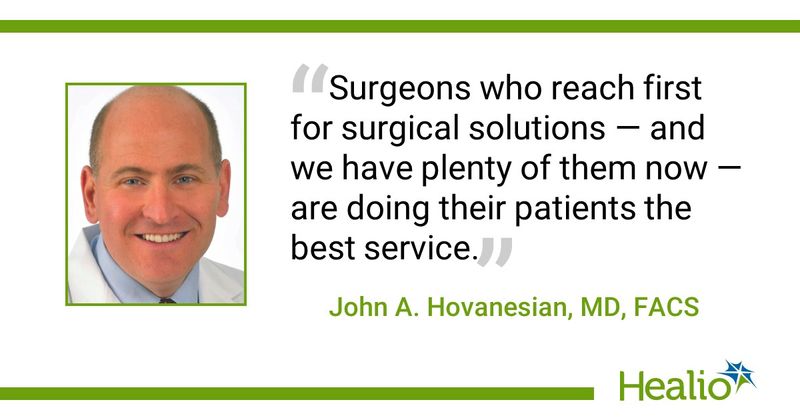BLOG: Glaucoma needs a new standard of care
Generations of ophthalmologists have treated primary open-angle glaucoma largely the same way, instituting and escalating the dosages of drops.
If we look objectively at the evidence, as well as the solutions that have come along in the meantime, it’s completely fair to say this is no longer the right approach. Surgeons who reach first for surgical solutions — and we have plenty of them now — are doing their patients the best service.

Let’s face it: Drops are terrible. My parents both had glaucoma and took drops for the last 3 decades of their lives. (Fortunately, I did not inherit their disease.) They were both PhD educated, highly motivated to preserve their sight, and very compliant with their other medications. Their timolol, dipivefrin and pilocarpine bottles sat by the salt and pepper shaker on the kitchen table. Still, it became a running joke at our house that they forgot their drops repeatedly, despite all their efforts to track and create reminders. Indeed, they were not alone.
A 2005 study by Nordstrom showed that more than half of glaucoma patients stopped taking their drops within 6 months of beginning, and more than 90% did not continue to refill their drop prescriptions for even 3 years. If a surgical procedure had a similar 90% failure rate, would anyone perform it?
Selective laser trabeculoplasty, Durysta (sustained-release bimatoprost, Allergan) and (soon) iDose (travoprost-eluting implant, Glaukos) are solutions my parents would dream of having, effectively lowering pressure without the burden and cost of drops. Both my parents developed ocular surface disease late in life, no doubt caused by the cumulative dose of preservatives, and it hindered their lifestyle as much as their other, more serious ailments.
Surgical solutions such as trabecular bypass (iStent, Glaukos; Hydrus, Alcon; goniotomy) are available as stand-alone therapy without cataract surgery, have all the effectiveness that drops would in a perfectly compliant patient but with none of the burden on the ocular surface, none of the recurring cost and none of the guilt.
In its recently released 12-month data on iStent infinite as stand-alone therapy in patients who had failed prior surgical and medical therapy, Glaukos reported that nearly 75% of patients reduced IOP by at least 20% and almost half by at least 30%. Alcon’s FDA data on the Hydrus implant showed an average IOP reduction of 7.5 mm Hg among 556 patients at 24 months.
Many of us pride ourselves on treating our patients as we would our family. Seeing my parents’ experience with glaucoma, today I would surely offer them a surgical solution at the onset of their disease. Probably I would start with SLT, certainly including approved sustained-release options, and progressing quickly to a stent or goniotomy. It’s sad my parents couldn’t take advantage of these advances during their lifetimes, but I’m going to make sure my patients today have the option. Besides improving their lives, it’ll give them less clutter around their salt and pepper shakers.
Follow @DrHovanesian on Twitter.
Collapse
